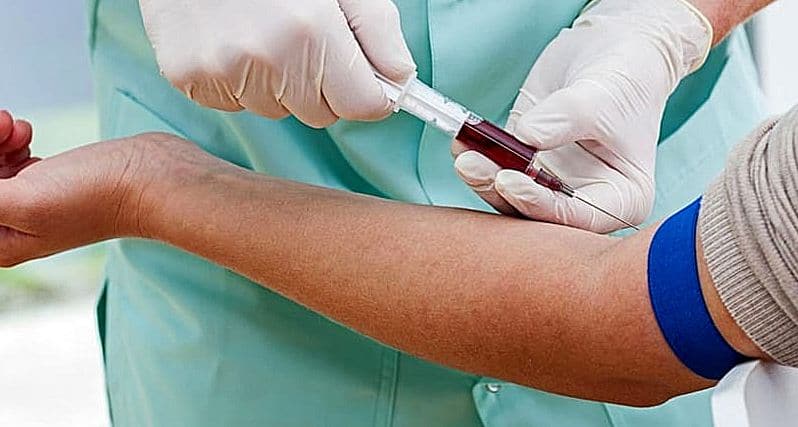Allarme colesterolo [LDL], dimezzati i limiti: “Non deve mai superare 100”. In base agli studi più recenti i valori massimi del colesterolo cattivo non dovrebbero superare i 100, contro i 190 “tollerati” attualmente: ecco perché
Redazione TODAY – 30 agosto 2016
According to what was known up to now, the indications could vary depending on the family predisposition to heart disease and one's state of health, without going over 190 anyway.
Instead now the limit set by cardiologists to the LDL (Low Density Lipoproteins, or the fatty proteins that make some foods so tasty), is strictly between 70 and 100, regardless of the medical situation.
Francesco Romeo, presidente della Società Italiana di Cardiologia: “Having a cholesterol target within 70-100 is crucial. This applies to everyone, even to those subjects who have very high normal values for familial hypercholesterolemia. To lower it il primo fattore è l’alimentazione, then statins can be used, and finally, for those who fail, there are the new drugs, the anti PCSK9 antibodies [Editor's note: Alirocumab by Sanofi/Regeneron and Evolocumab by Amgen, in the USA the price is between 8,000 and 12,000 dollars a year], che hanno grande potenzialità”.
Related news: Cholesterol: expectations are growing for the arrival of PCSK9 inhibitors
Hypercholesterolemia. Alirocumab arrives in Italy
Who speculates on the sick and inflates the price of medicines
EMA raccomanda l’approvazione di Praluent per ridurre i livelli di colesterolo
Efficacy and Safety of Alirocumab in Reducing Lipids and Cardiovascular Events
The PCSK9 o (Proprotein convertase subtilisin/kexin type 9) o proproteina della convertasi subtilisina/Kexin tipo 9 (PCSK9) è un enzima codificato, nell’uomo, dal gene PCSK9 sul cromosoma 1. Regola la degradazione del recettore LDL (low-density lipoprotein) per il colesterolo. La PCSK9 inizialmente era chiamata NARC-1 (neural apoptosis-regulated convertase-1)
Si ritiene che l’AIFA disporrà la rimborsabilità per questi nuovi farmaci per i pazienti resistenti alle terapie convenzionali e per i soggetti in prevenzione secondaria dopo una sindrome coronarica acuta, non a target o intolleranti alle statine. I soggetti candidabili a queste terapie innovative secondo queste indicazioni, nel nostro Paese potrebbero dunque essere circa 20-30 mila.
Ed for clarification: we have received many requests for information, perplexities and objections in relation to the article we have reported above. The very poor reputation of pharmaceutical companies has undoubtedly increased the criticism. This probably arises from some ambiguities. Ambiguities that are present in the numerous articles published these days on this topic.
At first glance it might seem like a "marketing" ploy to lower the benchmarks to increase the number of patients to be treated with drugs. Perhaps the result of a contribution (unconditional, of course) from the manufacturers of new drugs for hypercholesterolemia. There is in fact the suspicious coincidence of the launch of these new drugs.
Thinking badly makes you a sin, but sometimes you get caught up
Probabilmente in questo caso non è così (o non è solo così). Ad una più attenta lettura si può notare che tutti gli interrogativi e perplessità nascono dal più o meno consapevole sensazionalismo che domina tutti questi articoli. Non a caso abbiamo riportato nelle note i riferimenti di laboratorio. Tutto nasce dall’ambiguità degli articolisti, probabilmente non a conoscenza del problema, del Colesterolo Totale confuso con il Colesterolo LDL o non specificando i valori dell’uno e dell’altro. Per il primo viene considerato come limite un valore di 200, mentre per il Colesterolo LDL il limite di riferimento è considerato 130 (e inferiore) mg per decilitro, mentre viene considerato ottimale un valore di almeno 100. Tutti i medici ritengono che valori inferiori siano da preferire. Secondo le linee guida NCEP-ATPIII il Colesterolo LDL fra 130 e 159 è considerato borderline elevato, fra 160 e 189 elevato e superiore a 190 molto elevato.
The sensational news essentially has nothing sensational as the reference data have been evaluated in this way for some time and Prof. Romeo has done nothing but report it.
Sensationalism and unawareness of the subject by journalists did the rest.
